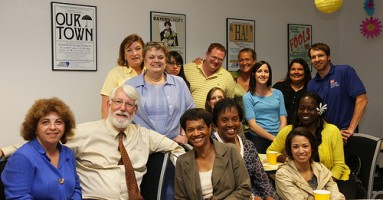 This is the fourth in a series of posts reflecting on last June’s Americans for the Arts convention in Chicago. Diversity and equity were large themes that I’ve addressed twice already. Last time (Self-Perpetuating Boards) I commented on issues of governance. This time, staff diversity is the topic.
This is the fourth in a series of posts reflecting on last June’s Americans for the Arts convention in Chicago. Diversity and equity were large themes that I’ve addressed twice already. Last time (Self-Perpetuating Boards) I commented on issues of governance. This time, staff diversity is the topic.
A highlight of the convention for me was Tom Finkelpearl’s (Commissioner of NYC’s Department of Cultural Affairs) comment that despite low salaries there is not an issue (at least compared to that experienced in the arts) hiring diverse staff members in social service organizations, as public school teachers, or for community organizing. He said that when people come to see the arts as an industry that gives back to the community, a much greater diversity of people will be willing to work in the field. Of course, that means that what arts organizations do would need to change considerably.
[I should point out that Mr. Finkelpearl was a contributor to my first book, Building Communities, Not Audiences, and has a long record of putting his money and sweat equity where his mouth is when it comes to diversity and equity. Years ago, hearing of his hiring of a community organizer at the Queens Museum of Art was a pivotal moment for me in the development of Building Communities.]
Mr. Finkelpearl’s observation was a huge Aha! moment for me. We lament the inability to attract diverse candidates in the arts, as my colleagues and I often did in trying to fill faculty positions in academia. Largely, we blame poor pay. While there is no doubt that low salaries are a factor, the reputation of the sector as a whole had never entered my mind as an impediment.
What if arts organizations were seen as robust contributors to better lives for African-Americans, Hispanics, recent immigrants, the poor, the disenfranchised? I do not mean to imply that it’s easy for social services, public schools, and community organizing groups to hire diverse staffs, but at least from the outside it appears they do not have the struggle we do.
Enhance diversity by being valuable.
Engage!
Doug
Photo:![]() Some rights reserved by USACE Europe District
Some rights reserved by USACE Europe District
